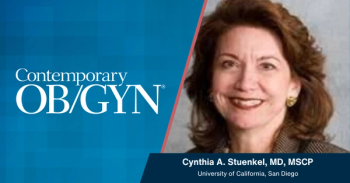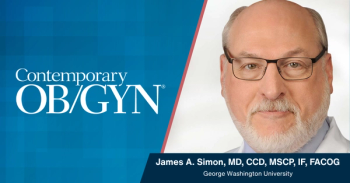
HPV Testing and Genotyping May Improve Cervical Cancer Screening
Since their introduction, cervical cytology screening programs have caused a substantial reduction in cervical cancer rates. However, the low sensitivity of one screen and resulting need for repeated screens during a lifetime to achieve programmatic sensitivity has deemed it inefficient. With that in mind, Dr Philip E Castle, of the American Society for Clinical Pathology in Washington, D.C., and colleagues compared the performance of the cobas human papillomavirus (HPV) test versus liquid-based cytology.
Since their introduction, cervical cytology screening programs have caused a substantial reduction in cervical cancer rates. However, the low sensitivity of one screen and resulting need for repeated screens during a lifetime to achieve programmatic sensitivity has deemed it inefficient. With that in mind, Dr Philip E Castle, of the American Society for Clinical Pathology in Washington, D.C., and colleagues compared the performance of the cobas human papillomavirus (HPV) test versus liquid-based cytology.
Castle and colleagues leveraged data from the ATHENA (Addressing THE Need for Advanced HPV diagnostics) study, the largest US clinical trial assessing HPV DNA tests and liquid-based cytology for cervical cancer screening. For this subanalysis, the researchers looked at women who were at least 25 years of age and not pregnant. The ATHENA study was conducted across 23 centers. Overall, the subanalysis included 40,901 women who had valid cobas and HPV liquid-based cytology test results.
Upon enrollment, two liquid-based cervical cytology samples were obtained from the participants; one sample was used for liquid-based cytology and for HPV testing with three assays (two first-generation assays, Amplicor HPV test and Linear Array HPV genotyping test, and the second-generation cobas HPV test with individual HPV16 and HPV18 detection). The second sample was reserved for additional testing. Women were selected to receive colposcopy if they had atypical squamous cells of undetermined significance (ASC-US) or worse cytology in first-generation HPV testing or tested positive with either first-generation HPV test; a random sample of women who tested negative for HPV and cytology also received colposcopy.
Among women who had colposcopy, Castle and colleagues found that the cobas HPV test was more sensitive than liquid-based cytology for detection of CIN3 or worse. However, they also found the cobas was less specific than liquid-based cytology (92.0% versus 53.3%; difference of 38.7%). Although adding liquid-based cytology to HPV testing increased sensitivity for CIN3 or worse to 96.7%, it also increased the number of positive screens by 35.2%. In comparison with the use of ASC-US or worse cytology alone, Castle and colleagues also found that use of HPV16 or HPV18 detection as an additional or alternative triage strategy to reproducible cytological abnormalities yielded better, more reliable information for identifying women with CIN3 or worse.
“On the basis of our findings and other published data, we propose that rational use of HPV testing (and genotyping for HPV16, HPV18, or both) with or without liquid-based cytology can provide potentially cost-effective and safe cervical cancer screening,” Castle and colleagues concluded. “Because HPV16 and HPV18 readouts for the cobas HPV test are provided concurrently with the pooled detection of other carcinogenic HPV genotypes, testing for HPV16 and HPV18 to triage HPV-positive women could be very efficient and reduce manpower requirements in clinical laboratories compared with cytology.”
In an accompanying editorial, Drs Guglielmo Ronco, Silvia Franceschi, and Nereo Segnan, of the Centre of Cancer Prevention in Turin, Italy, and the International Agency for Research on Cancer in Lyon, France, acknowledged the study’s promise but remained cautious regarding the clinical implications. “Unfortunately, all combinations of genotyping and cytology in Castle and colleagues’ study had less than 80% sensitivity, leading the investigators to recommend test repetition after 1 year,” they wrote. “Nevertheless, the increased sensitivity provided by the combined triage tests would allow some CIN3 or worse to be detected 1 year earlier, which should provide additional (though ill-defined) protection against cervical cancer.”
Related Content
References:
References
Castle PE, Stoler MH, Wright TC Jr, et al. Performance of carcinogenic human papillomavirus (HPV) testing and HPV16 or HPV18 genotyping for cervical cancer screening of women aged 25 years and older: a subanalysis of the ATHENA study. Lancet Oncol. 2011;12(9):880-90.
Ronco G, Franceschi S, Segnan N. HPV16 and HPV18 genotyping in cervical cancer screening. Lancet Oncol. 2011;12(9):831-2.
Newsletter
Get the latest clinical updates, case studies, and expert commentary in obstetric and gynecologic care. Sign up now to stay informed.




















